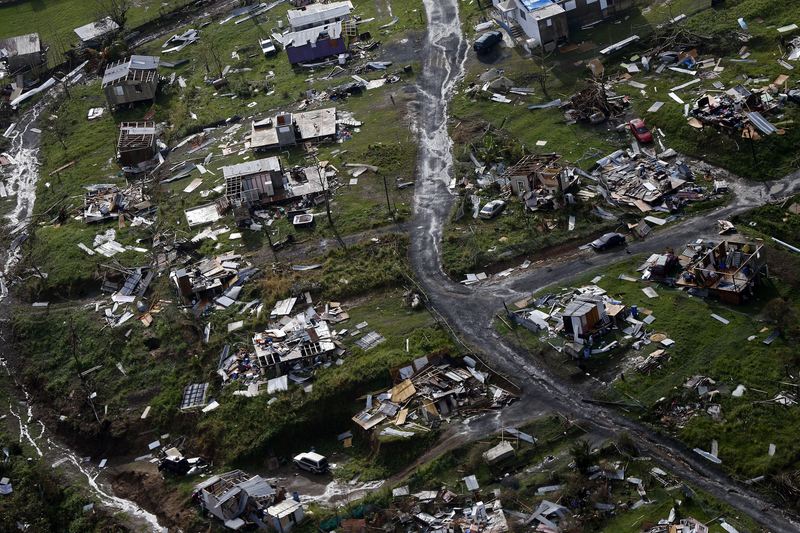[PROMOS/MUSIC UP & UNDER]
BROOKE GLADSTONE: From WNYC in New York, this is On the Media. I’m Brooke Gladstone.
BOB GARFIELD: And I’m Bob Garfield.
[MUSIC UP & UNDER]
Anxious about an autumn of catastrophe? Take a number.
[CLIPS]:
FEMALE CORRESPONDENT: The deadliest mass shooting in modern US history.
MALE CORRESPONDENT: The most deadly mass shooting in recent American history.
MALE CORRESPONDENT: The deadliest mass shooting in American history, more than 50 --
[END CLIP]
BOB GARFIELD: As the hours ticked by, Sunday, Monday and Tuesday, the media, in a vacuum of information and understanding that so often accompanies tragedy, offered up-to-the-minute reckonings of the Las Vegas death toll: 20, 50, 58, breathlessly watching every nudge upwards, like a pledge thermometer at a telethon.
[CLIPS]:
MALE CORRESPONDENT: It was 58, now up to 59 dead.
MALE CORRESPONDENT: It’s also more than the total amount killed in the Virginia Tech and Sandy Hook Elementary shootings, combined. In fact, Sunday night’s shooting in Las Vegas was deadlier than the deadliest single day for Americans in the entire war in Afghanistan, and that is all 16 years’ worth.
[END CLIP]
BOB GARFIELD: Okay, sickening fact noted. Look, there are reasons for such impulses. Once again, amid chaos, hard facts seem so urgent and fetching. And, obviously, death tolls are a convenient shorthand for the enormity of tragic events. But they are also blunt, misleading and ripe for abuse.
[CLIP]:
MALE CORRESPONDENT: The South Vietnamese lost 216 killed, enemy dead numbered 827, second-highest weekly figure this year.
[END CLIP]
BOB GARFIELD: In Vietnam, an entire war was fed with a weekly body count, not just dubious in its accounting but ruinous in its effect, suggesting a steady path to victory in a lost cause. This could not have taken place with the media not a reliable messenger of an ongoing big lie. And this is a lesson we simply have never learned.
[CLIP]:
FEMALE CORRESPONDENT: In Puerto Rico, at least 16 people are now dead, thousands of homes --
[END CLIP]
BOB GARFIELD: Sixteen dead? Hey, not bad in the overall scheme of things, right? Except that when communications are restored and a full accounting takes place, the number will rise by multiples.
Omaya Sosa Pascual of the Center for Investigative Journalism in Puerto Rico has been trying to run down a more accurate count.
OMAYA SOSA PASCUAL: We could at least corroborate around 60 more deaths, and we only spoke to people, let’s say, from six or seven municipalities, and there are 78. So certainly, it could be in the hundreds. Even the agency that takes care of certifying deaths here was down for the first whole week. They still don’t have computers, they still don’t have electricity, so their 16 death count number means nothing. And yesterday, just a couple of hours after President Trump left, they revised the number for the first time, and now it’s 34, more than double.
BOB GARFIELD: That, too, will rise.
OMAYA SOSA PASCUAL: This has not ended. They still don’t have electricity. All the elderly homes don’t have electricity, either. And you can ask yourself what’s happening with those human beings? They are dying every day!
BOB GARFIELD: Hurricane Maria has equally played havoc with buildings, bridges, roads, water supply, sewers, a critical dam, communications and the island’s very ecology that will require years, decades to repair. An entire society has been paralyzed with unknowable consequences.
OMAYA SOSA PASCUAL: Many people are just leaving, sending their children away so they can be safe. And it’s going to be a couple of months before people can just go to work. And many people are, are just being laid off. Nobody’s talking about that yet.
Many people have not left shelters yet. There’s people even making improvised shelters in the center of the island, like breaking into a school, for example, because some people, when they go back, they don’t have a roof, they don’t have anything.
BOB GARFIELD: Not even a destination for their dead.
OMAYA SOSA PASCUAL: People have even had to bury their loved ones themselves in some kind of a home grave or something like that.
BOB GARFIELD: But if you were a president who waited a week to facilitate relief shipments, ongoing calamity doesn’t justify your indifference. So, death toll.
[CLIP]:
PRESIDENT TRUMP: What is your death count, as of this moment, 17?
GOV. RICARDO ROSSELLO: Sixteen, certified.
PRESIDENT TRUMP: Sixteen people certified, 16 people versus in the thousands. You can be very proud of all of your people, all of our people working together, 16 versus literally thousands of people.
[END CLIP]
BOB GARFIELD: Using an affluent, less ravaged enclave of the island as a backdrop, the president of the United States then tossed paper towels to survivors, like a teeshirt gun at a sports arena, just the latest clown show from a man who views the world through Nielsen ratings.
But history is not a show or a competition or a tally sheet. In 1914, Austria's archduke and duchess were assassinated in Sarajevo. The death toll was two; the result was World War I. There is also the danger on the other side of news as cost accounting. If numbers define the toll of horror, the estimated 45 million souls who died in Mao Zedong’s Great China Famine would render 9/11 insignificant. They would render the Holocaust insignificant. But, of course, it doesn't work that way. Ask anybody who's ever lost a child. Las Vegas cannot be measured against Sandy Hook and Puerto Rico cannot be measured against New Orleans. Pay no attention to the headline declarations of “worst in American history.” There is not meter, there is no calculus, there is no rating system for tragedy.
[MUSIC UP & UNDER]


